The 7 Principles of Leave No Trace are important rules everyone should follow while out and enjoying Mother Nature. Find out what exactly these principles are, why they’re important, and how to actually implement them!
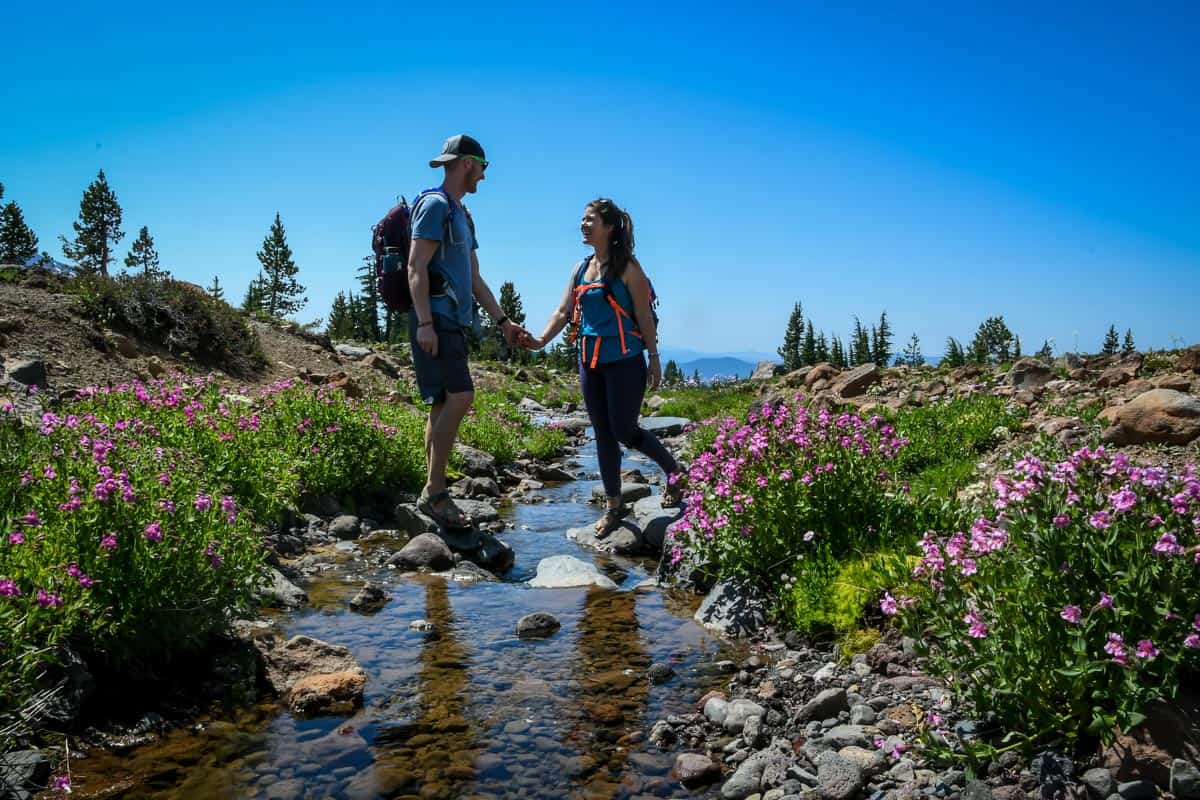
Even the most careful and thoughtful outdoor enthusiasts have at least a small impact every time they set foot in nature. That’s the unfortunate reality of humans – we very literally leave a footprint behind.
With millions of people hitting the trails, camping under the stars, and visiting parks and outdoor recreation spaces every day, we humans take a serious toll on Mother Nature. While most of us certainly don’t intend to cause harm, awareness of our impact is super important. It may be easier than you realize to pollute water sources, damage delicate ecosystems, or erode trails.
All this doesn’t necessarily mean we can’t enjoy nature! Fortunately, there are several things we can do to effectively minimize our impact and ensure that future generations can enjoy the planet as much as we do. That’s where the 7 principles of Leave No Trace come into play.
Leave No Trace acts as a comprehensive guide for how to safely and sustainably enjoy The Great Outdoors.
These guidelines apply to casual hikers and avid backpackers, those camping in the backcountry, and people visiting local city and state parks—anyone and everyone who wants to enjoy recreation in nature, even if for just a short time.
In this article we’ll break down the 7 principles of Leave No Trace, to learn about the responsible recreation practices we all should be following.
Leave No Trace Principles
- Plan ahead and prepare
- Travel and camp on durable surfaces
- Dispose of waste properly
- Leave what you find
- Minimize campfire impacts
- Respect wildlife
- Be considerate of other visitors
Principle #1: Plan ahead and prepare
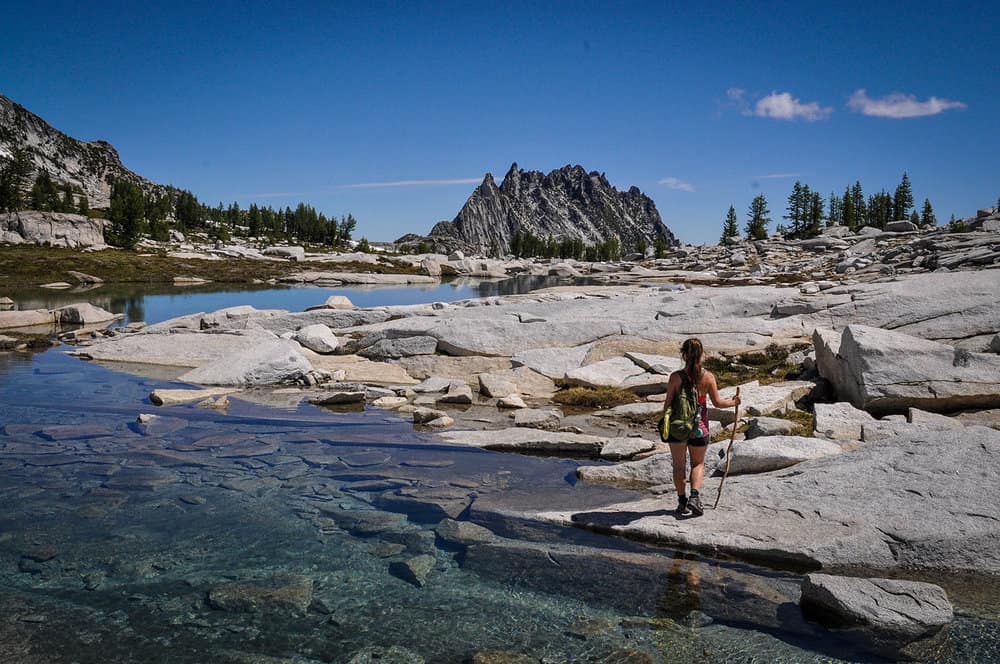
Even if you’re a seasoned hiker or a lifelong adventure addict, it’s important to do your homework and plan ahead for every single outdoor excursion (yes, even something as simple as a short and sweet hike in your local area that you’ve done dozens of times!).
For example, many parks, both local and state or national, have special rules and strict guidelines regarding what can and cannot be brought in or used. Some may prohibit glass containers, while others may allow leashed pets only in designated areas. Reading regulations ahead of time can help eliminate surprises, making the outing safer and more enjoyable.
As with any type of trip, it’s your responsibility to research a destination so that you can prepare appropriately.
Some ways to plan ahead as part of the 7 principles of Leave No Trace include:
- Research trails and campgrounds to know what to expect, especially if you’ve never visited before. You never know when there may be closures due to damage, maintenance, aggressive wildlife sightings, or something else.
- Check weather forecasts to ensure you dress and pack appropriately. We recommend checking as soon as you have a firm plan in place, then again right before you leave in case conditions have changed.
- Read recent reviews to familiarize yourself with the terrain and surrounding areas, as well as current conditions. In doing this, we’ve found valuable information about unexpected road closures and tips for avoiding unsafe obstacles on trails that we never would have known otherwise.
Principle #2: Travel and camp on durable surfaces

Always stay on the trail. Trails are designed and put in place not only as a literal guide for people to follow, but also as a critical way to protect the area. It’s important to consider how our footsteps can impact fragile vegetation on the Earth’s surface.
With each step we take outside of a designated trail, plants and other vegetation can quickly and easily be damaged, and they may not be able to recover—particularly if it’s new growth or already recovering from previous damage.
It’s important to keep in mind how this directly impacts wildlife. If vegetation is damaged, that may hurt or reduce an important food source for certain species, which in turn has a long-lasting domino effect, impacting other animals and the entire ecosystem as a whole.
Another consideration is that erosion can cause very serious problems. Again, trails are generally built in specific locations for this very reason: to avoid fragile areas and keep people on more solid, or durable, surfaces.
The same rules apply to camping and, specifically, dispersed camping. While one of the main reasons to camp this way is to get “off the beaten path,” you have to be careful about taking that too literally.
For many of the same reasons we should always stay on designated trails, it’s best to use existing campsites. They’re generally established on well-cleared, dry (and durable!) surfaces, making them not only lower-impact but also convenient.
Principle #3: Dispose of waste properly
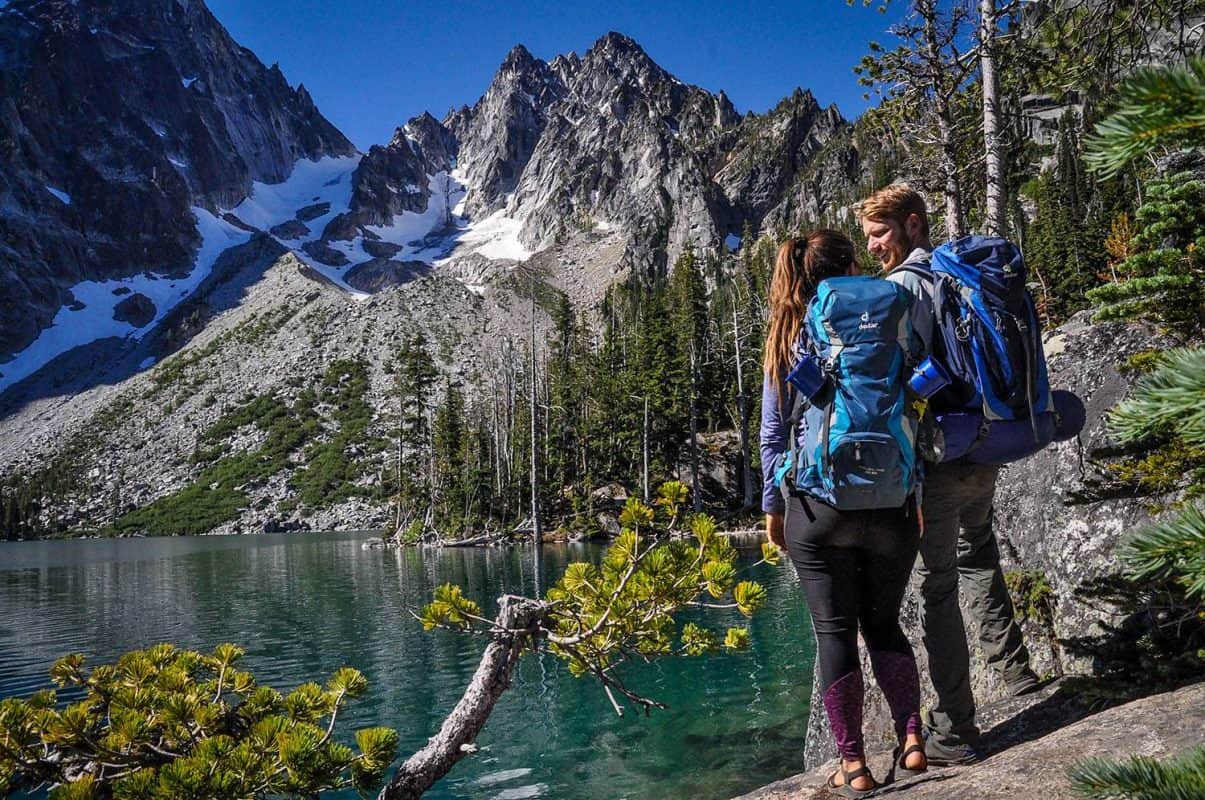
There’s no sugar-coating it: litter is a problem everywhere. Of course it’s ugly to look at, but it also (more importantly!) has a huge negative impact on Mother Nature.
Depending on where you’re going, there may not be trash cans available, so plan to take whatever you bring in back out with you. This is known as “pack it in, pack it out,” and points out another way #1 on the 7 principles of Leave No Trace (plan ahead) is so important.
We actually recommend keeping a couple of plastic grocery or trash bags in your packs so that you’re always prepared. We’ve run into the situation a few times where a place that typically does have trash cans, for whatever reason did not that day — and because we were prepared, we were able to pack our trash out!
Food scraps should also be considered waste when you’re out in the wilderness. Even if you spill food, you should attempt to clean it up as best you can so wild animals can’t get it. One of the most dangerous things for them (and us!) is to learn that humans = food!
Keeping in line with these Leave No Trace principles, always make sure the soap and other hygiene products you use when out enjoying nature are biodegradable. However, even then, contamination is still a major concern for both plants and wildlife, so always take care to use these products well away from any water source. As far as dirty dishwater is concerned, take a few extra minutes to scatter it around.
This next one is everyone’s least favorite topic, but it’s super important to consider in terms of following the 7 principles of Leave No Trace. If you need to answer the “call of nature” at some point while you’re out in nature (see what we did there!), there are some rules to consider…
Never leave toilet paper, feminine hygiene products, or hygiene wipes on the ground (or anywhere else, for that matter!). Those need to be packed out and thrown in a trash can. We recommend keeping some grocery bags or, better yet, ziplock bags, for this purpose.
Before going Number 2, find a place at least 200 feet away from a water source and dig a “cat hole” 6-8 inches deep. Once the deed is done, cover the hole up with soil.
Something else to be aware of is that the Grand Canyon and other national parks require human waste to be packed out and disposed of outside the park (yet another reason to do your homework in the plan ahead stage!).
Principle #4: Leave what you find
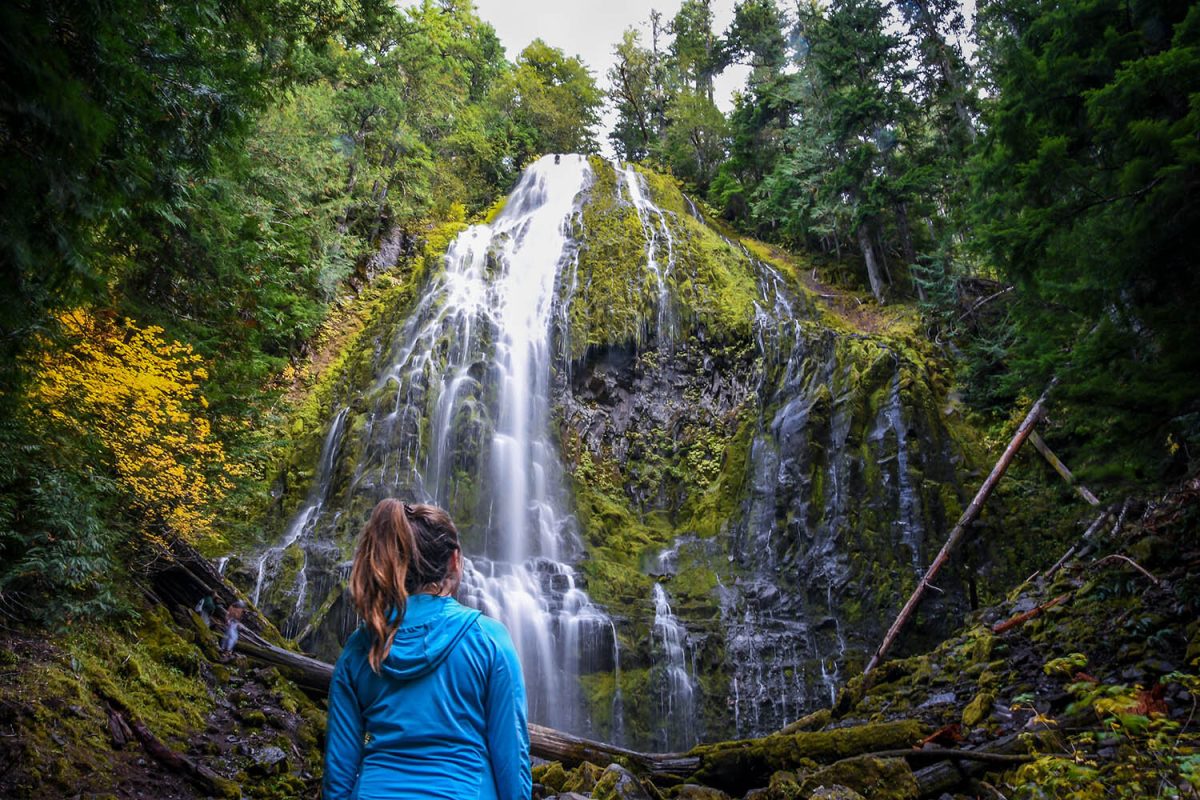
“Look but don’t touch” is one of the most important of the 7 principles of Leave No Trace.
A beautiful flower or eye-catching rock is for everyone to enjoy — in its natural habitat. Admire it, snap a picture or two, and then go on your way, leaving it in its rightful home. Cultural landmarks and historic structures such as Native American ruins fall into the same category.
Along the same lines, if you have a plant or fish that you no longer want to take care of, do not release it into the wild. While it may be tempting to do so (and seem like the right thing to do!), non-native species should never be introduced into an area. There’s just no way of knowing how they may impact the ecosystem.
Principle #5: Minimize campfire impacts
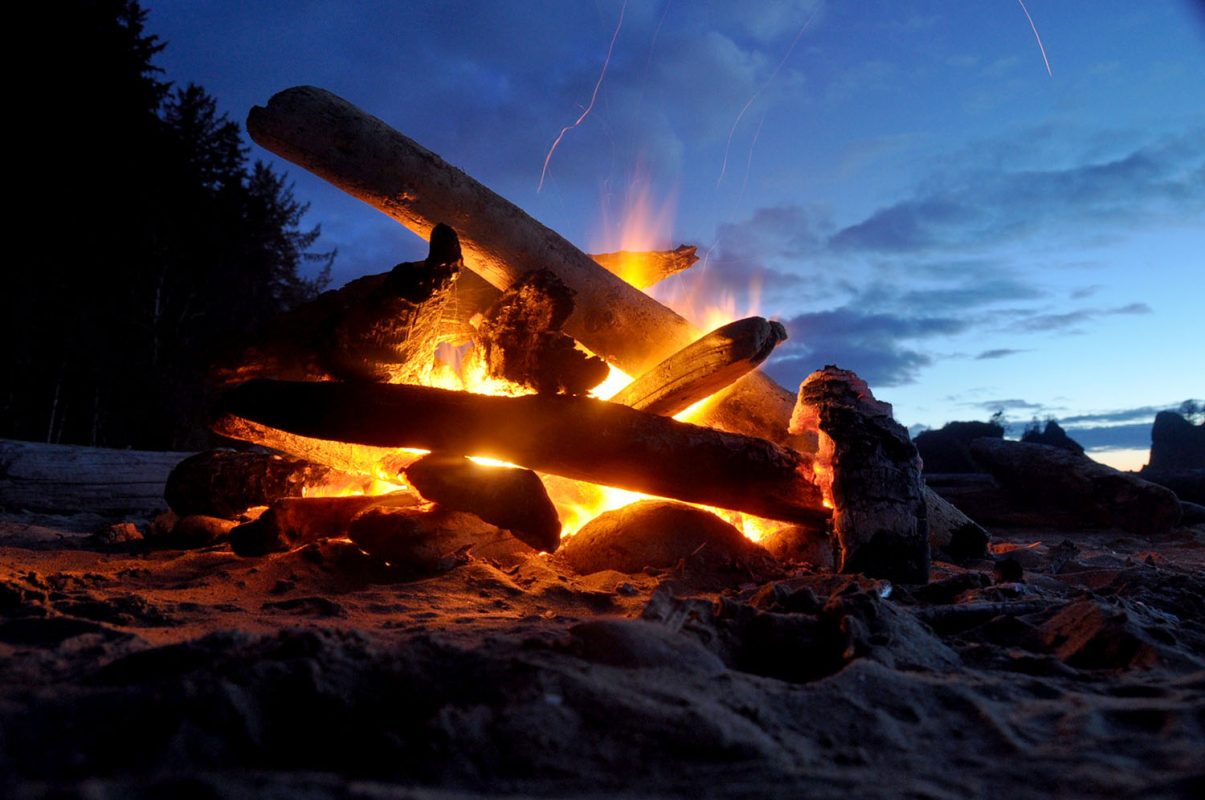
Fire is a major, major safety concern. Several states, especially those in the West, ban any kind of campfires in the dry summer season, and for very good reason. Did you know a tiny spark from a metal chain making contact with asphalt is enough to ignite a massive wildfire?!
It should go without saying, but: it is absolutely critical to obey all fire restrictions. To find out what they are in the area you’re planning on visiting, check local county, Forest Service, National Park Service, or Bureau of Land Management websites. These services’ social media accounts, Twitter in particular, are also excellent for checking the most up-to-date information on burn bans, fire restrictions, or area closures.
If campfires are allowed, make sure to do the following:
- Establish a fire ring and keep your fire contained to it
- Use fire pans
- Keep fires small
- Never leave a fire unattended
- Use water to extinguish fires and never leave one smoldering
- Scatter ashes after the fire is out to be absolutely certain any smolders can’t re-ignite
A good alternative for camp cooking when there are fire restrictions are portable stoves. Because they’re controlled by fuel and can manually be turned on and off, these are typically allowed even in areas where there’s a full-blown fire ban. They’re also so convenient that we often use ours even when we have access to build a traditional campfire.
Principle #6: Respect Wildlife
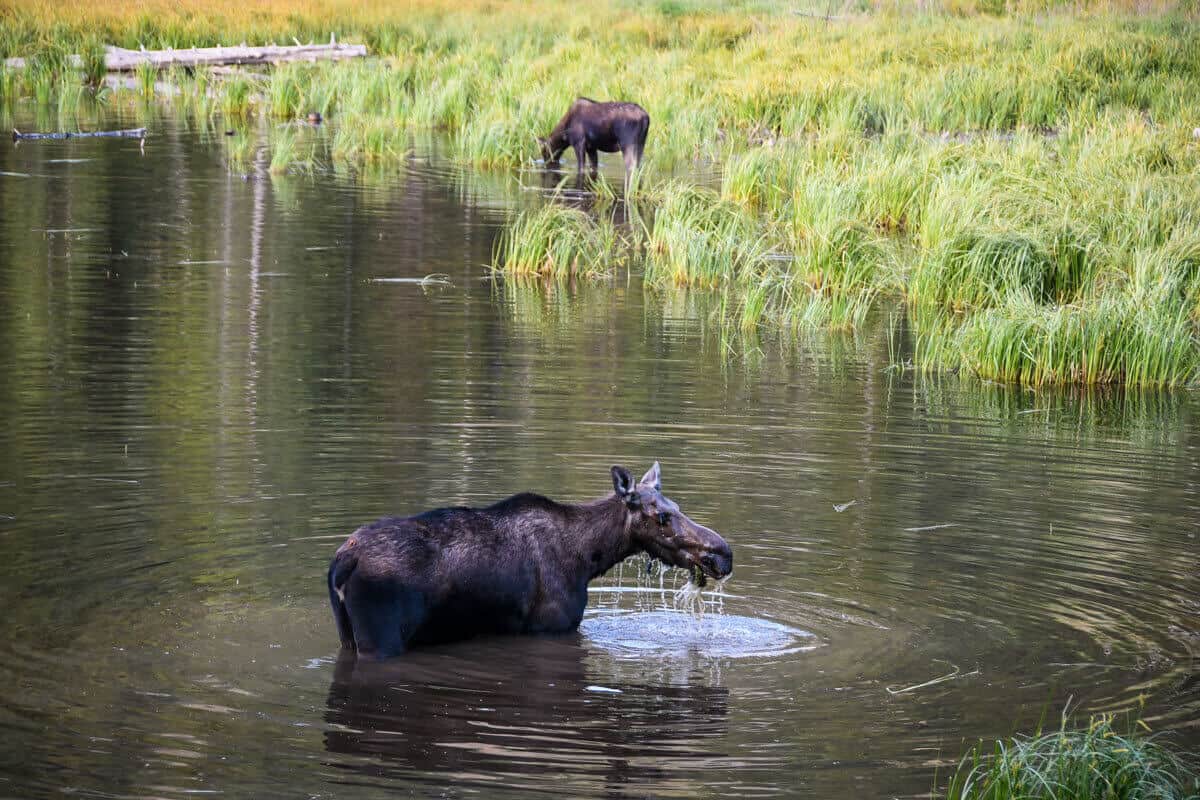
Wild animals should be left alone, plain and simple. It doesn’t matter if it’s a cute, friendly-looking squirrel or a mean-looking grizzly bear; it’s always better to admire wildlife and take pictures from a very safe distance — and never, ever approach them or try to feed them!
A good rule of thumb (pun intended!) is to hold your arm out and stick up your thumb. If the animal disappears behind your thumb, you’re at a perfect distance away. If you can see it, move further away.
In the vast majority of cases, wild animals will give you the same respect and leave you alone. In the rare cases that a bear or other large animal is in the area and becomes aggressive, it’s always smart to carry bear spray with you while hiking in bear country.
Speaking of bears, you should always pack food into bear-proof canisters when camping and place them a safe distance from your campsite while you’re sleeping or out hiking.
Principle #7: Be considerate of other visitors
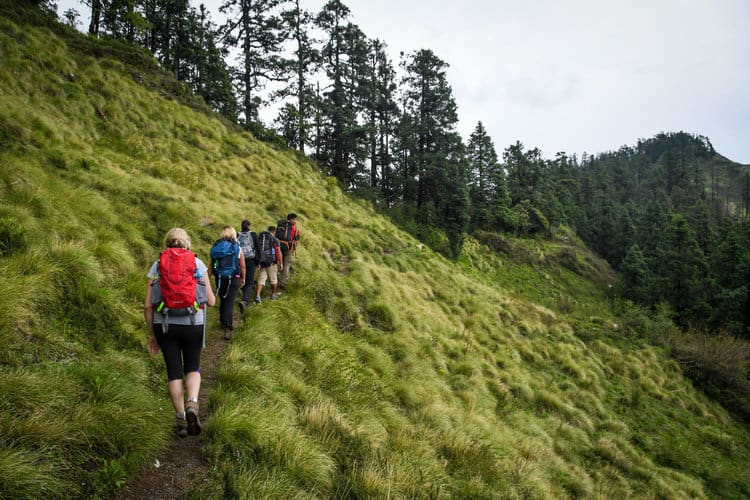
The final of the 7 principles of Leave No Trace is an increasingly important one. Popular trails and campsites are often full of people, even on off-peak days, so you may not necessarily enjoy your favorite spot alone.
Keep in mind the old adage, “treat others as you want to be treated.” Trails are two-way, so always yield to other hikers and walk in a single-file line instead of next to one another when passing others.
Try to keep noise to a minimum, whether it’s you and your friends talking to each other or you’re solo and listening to music. This minor detail could ruin others’ experience in nature.
In places that allow dogs, these same principles apply to our four-legged friends. Their waste should be picked up and disposed of properly, and they should always remain on their leash and stay on trails. Pet parents should also keep in mind that not everyone likes dogs (hard to imagine, we know!), so they should be mindful of letting their pup run up and greet people.

You may also like…
- Beginner Hiking Tips: Essential Info & Preparedness
- What to Wear Hiking in Every Season
- Best Healthy & Delicious Hiking Snacks
- Hiking in Winter: Essential Guide + Tips
Save this article on Pinterest for later!
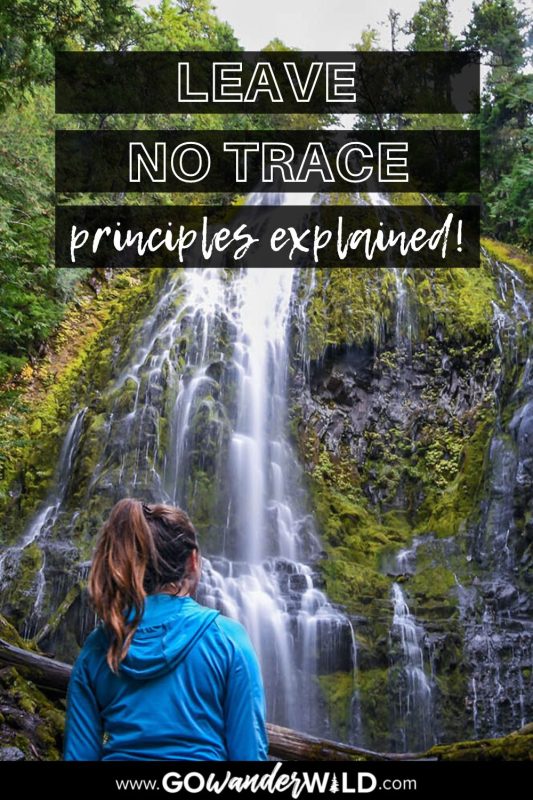

We want to hear from you!
Are you learning to enjoy the outdoors responsibly and still have questions? Drop us a note in the comment section below and we’ll do our best to get back to you!

